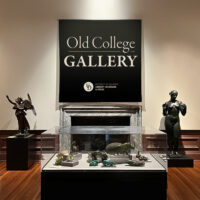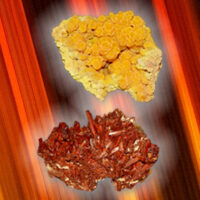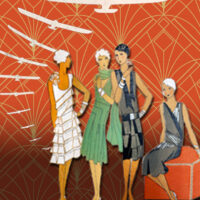Find Exhibitions
Highlights from the MuseumsOn View
From fall 2025 through fall 2026, the Main Gallery of Old College will showcase a unique installation of the UD Library, Museums and Press’ mineral and art collections. This presentation highlights the beauty of natural materials alongside the creativity of sculptural form, inviting visitors to explore the dialogue between art and nature.
Icons of the Fantastic: Illustrations of Imaginative Literature from the Korshak CollectionOn View
Visual artwork draws readers into imaginative realms, ignites curiosity and allows stories to transcend the boundaries between text and image–further transforming complex narratives and fantastical worlds into accessible experiences for all.
We invite you to embark on a visually breathtaking journey through more than a century of imaginative art in Icons of the Fantastic: Illustrations of Imaginative Literature from the Korshak Collection. This two-gallery exhibition, presented across the University of Delaware’s Mechanical Hall Gallery and the West Gallery in Old College, showcases 80 original works of art by 50 celebrated illustrators whose visionary work helped shape the genres of science fiction, fantasy and adventure; and celebrates the groundbreaking legacy of Erle Korshak and Shasta Publishers in fantasy and science fiction worlds.
Icons of the Fantastic: Illustrations of Imaginative Literature from the Korshak CollectionOn View
Visual artwork draws readers into imaginative realms, ignites curiosity and allows stories to transcend the boundaries between text and image–further transforming complex narratives and fantastical worlds into accessible experiences for all.
We invite you to embark on a visually breathtaking journey through more than a century of imaginative art in Icons of the Fantastic: Illustrations of Imaginative Literature from the Korshak Collection. This two-gallery exhibition, presented across the University of Delaware’s Mechanical Hall Gallery and the West Gallery in Old College, showcases 80 original works of art by 50 celebrated illustrators whose visionary work helped shape the genres of science fiction, fantasy and adventure; and celebrates the groundbreaking legacy of Erle Korshak and Shasta Publishers in fantasy and science fiction worlds.
Mineralogical Museum: Permanent CollectionOn View
Opened in 1971 and renovated in 2009, the Mineralogical Museum has approximately 350 specimens on display. The entire collection contains more than three thousand specimens of minerals, meteorites, gemstones and carvings and is divided into a display collection and a reference collection. The founding collection, gifted to the University of Delaware in 1964 by Irénée du Pont, shows early examples from gemstone mining in the United States and South America and major finds from Europe. Other cases show specimens from the different continents and individual themes of crystallography and cave minerals.
The Vibrant World of Lead MineralsOn View
Lead may be best known for its dull, gray appearance, but in the mineral world, it reveals a far more dazzling side. The Vibrant World of Lead Minerals invites you to explore the unexpected beauty of lead-based minerals—brilliant, colorful and captivating specimens that defy the element’s ordinary reputation.
This exhibition showcases an array of stunning lead minerals from around the globe, including specimens from Australia, Namibia, Morocco and the United States.
Join us this fall at the Mineralogical Museum in Penny Hall for a dazzling journey through the hidden brilliance of lead minerals!
An Age of Excess: Art, Technology and Style of the 1920s On View
Step into the vibrant world of the Jazz Age with An Age of Excess: Art, Technology and Style of the 1920s. Celebrating the infamous decade where hair and skirts got shorter, radio and silent movies captivated the masses, and automobiles brought energy to the streets, this exhibition explores the dynamic intersection of culture, innovation and design during one of the most transformative decades in American history. As author F. Scott Fitzgerald wrote, “It was an age of miracles, it was an age of art, it was an age of excess.”
Organized in celebration of the 100th anniversary of The Great Gatsby, this exhibition draws from the University of Delaware Library’s Special Collections to showcase a dazzling array of books, fashion plates, trade catalogs, illustrations and advertisements. Together, these materials capture the iconic spirit and style that defined the Jazz Age—an era of glamour, rapid change and enduring cultural impact.
An Age of Excess is on view from August 26 through December 19, 2025, in the Morris Library Information Room. The exhibition is free and open to the public during the Library’s regular hours.





